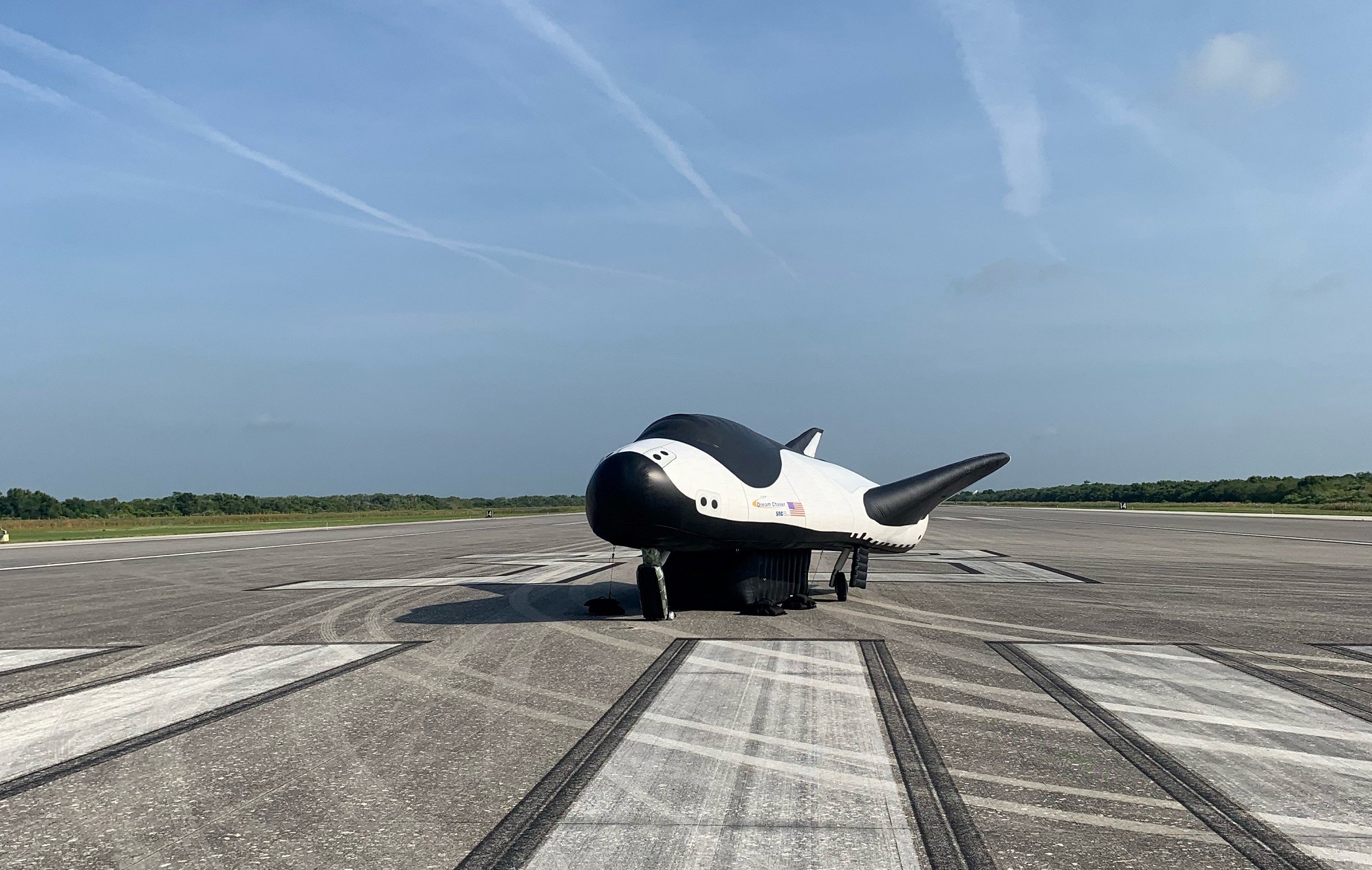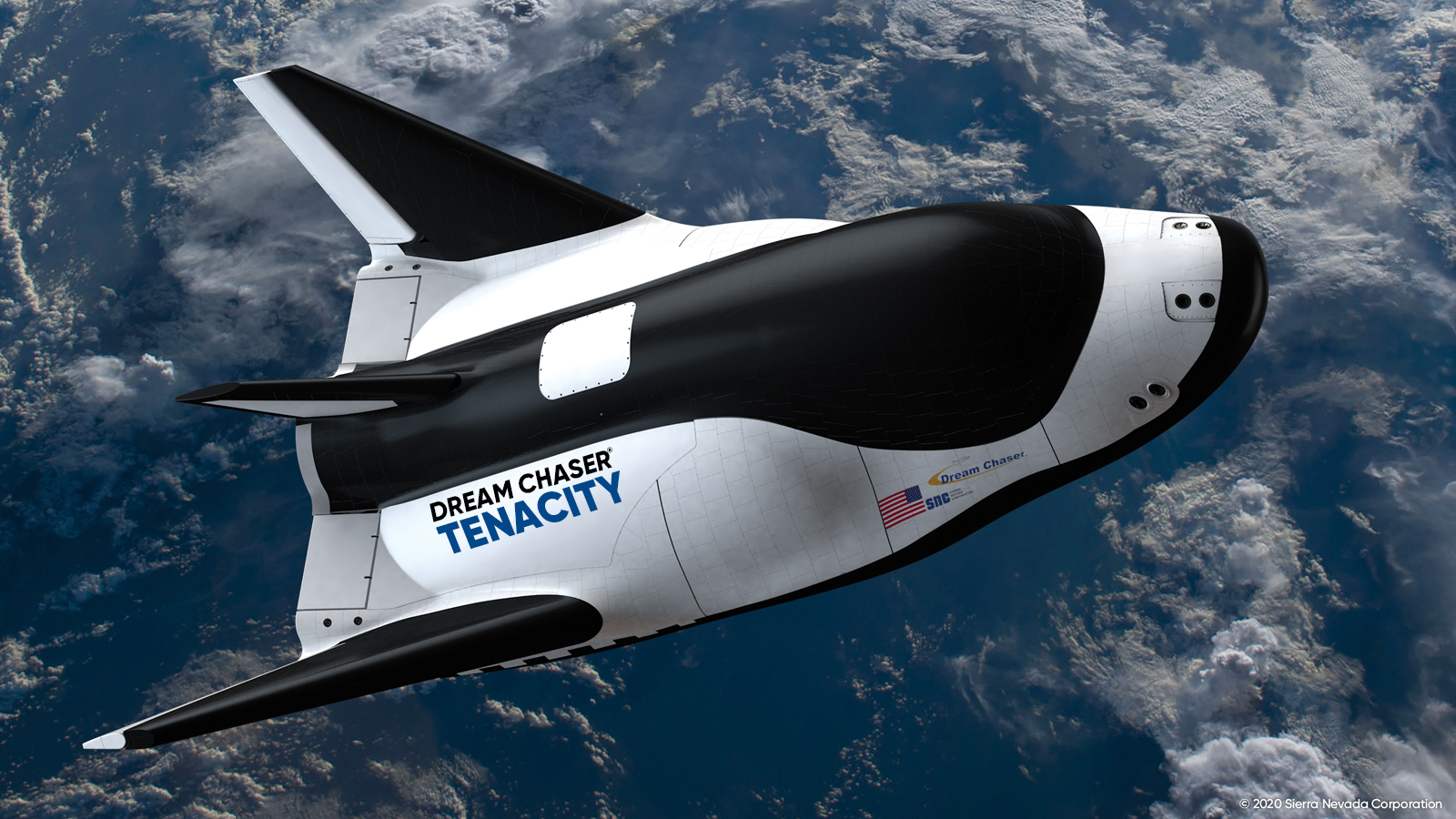
After a decade-long lull, a famous Florida runway will soon start hosting space-plane landings again.
The private Dream Chaser space plane will touch down at the Launch and Landing Facility (LLF) to wrap up its cargo missions to the International Space Station for NASA, the robotic vehicle's builders, Sierra Nevada Corp., announced on Tuesday (May 4).
The LLF is part of NASA's Kennedy Space Center in Florida. Its 15,000-foot-long (4,570 meters) runway was the touchdown site for 78 space shuttle missions, including the final one, Atlantis' STS-135 flight in July 2011.
In pictures: Sierra Nevada's Dream Chaser aces glide test flight
Back then, the LLF was known as the Shuttle Landing Facility. Space Florida, the state's aerospace economic development agency, now operates the facility under a 30-year lease from NASA, and under this different name.
Sierra Nevada has officially entered into a "use agreement" with Space Florida to land Dream Chaser at the LLF. The use agreement makes Sierra Nevada "the first commercial user of Space Florida’s FAA [Federal Aviation Administration] Re-entry Site Operator License and provides the runway and support facilities needed during testing and landing," company representatives said in a statement.
It also moves Sierra Nevada a step closer to applying for its own FAA re-entry license, which the company will need before launching its first Dream Chaser mission, the representatives added.
Get the Space.com Newsletter
Breaking space news, the latest updates on rocket launches, skywatching events and more!
"This is a monumental step for both Dream Chaser and the future of space travel," Sierra Nevada CEO Fatih Ozmen said in the same statement. "To have a commercial vehicle return from the International Space Station to a runway landing for the first time since NASA’s space shuttle program ended a decade ago will be a historic achievement."
FAA just approved Dream Chaser to land at the Launch and Landing Facility. Can’t wait for the real spacecraft to arrive next year! pic.twitter.com/jZG1eqx1N9May 4, 2021
Sierra Nevada holds a NASA contract to fly at least six uncrewed cargo missions to and from the orbiting lab with Dream Chaser, which is 30 feet (9 meters) long. (For perspective: The space shuttle orbiters were about 122 feet, or 37 m, from tip to tail.)
Those flights will lift off aboard United Launch Alliance Vulcan Centaur rockets from Florida's Cape Canaveral Space Force Station and (we now know) touch down at the LLF, which is right next door. The first such resupply mission is targeted for 2022.
Two companies — SpaceX and Northrop Grumman — already fly robotic cargo missions to the orbiting lab for NASA. SpaceX uses a robotic version of its Dragon capsule for the job, and Northrop Grumman employs a spacecraft called Cygnus. Like Dream Chaser, Dragon is reusable. Cygnus is designed to burn up in Earth's atmosphere after leaving the station.

Sierra Nevada originally began developing Dream Chaser as a crewed vehicle, with the goal of winning a NASA contract to take astronauts to and from the station. NASA ended up selecting SpaceX and Boeing for this task, but Sierra Nevada has not ruled out building a crewed version of the space plane, and it's working on other human spaceflight projects as well. (SpaceX has already launched two contracted crewed missions to the space station for NASA; Boeing is preparing for an uncrewed test flight of its Starliner capsule to the orbiting lab later this year, which would pave the way for crewed missions.)
For example, Sierra Nevada — which is now transitioning its space division into a separate company known as Sierra Space — is developing an expandable space habitat called the Large Integrated Flexible Environment (LIFE). Sierra Nevada has expressed interest in using Dream Chaser and LIFE habitats to build a commercial space station in low Earth orbit.
Mike Wall is the author of "Out There" (Grand Central Publishing, 2018; illustrated by Karl Tate), a book about the search for alien life. Follow him on Twitter @michaeldwall. Follow us on Twitter @Spacedotcom or Facebook.
Join our Space Forums to keep talking space on the latest missions, night sky and more! And if you have a news tip, correction or comment, let us know at: community@space.com.

Michael Wall is a Senior Space Writer with Space.com and joined the team in 2010. He primarily covers exoplanets, spaceflight and military space, but has been known to dabble in the space art beat. His book about the search for alien life, "Out There," was published on Nov. 13, 2018. Before becoming a science writer, Michael worked as a herpetologist and wildlife biologist. He has a Ph.D. in evolutionary biology from the University of Sydney, Australia, a bachelor's degree from the University of Arizona, and a graduate certificate in science writing from the University of California, Santa Cruz. To find out what his latest project is, you can follow Michael on Twitter.









